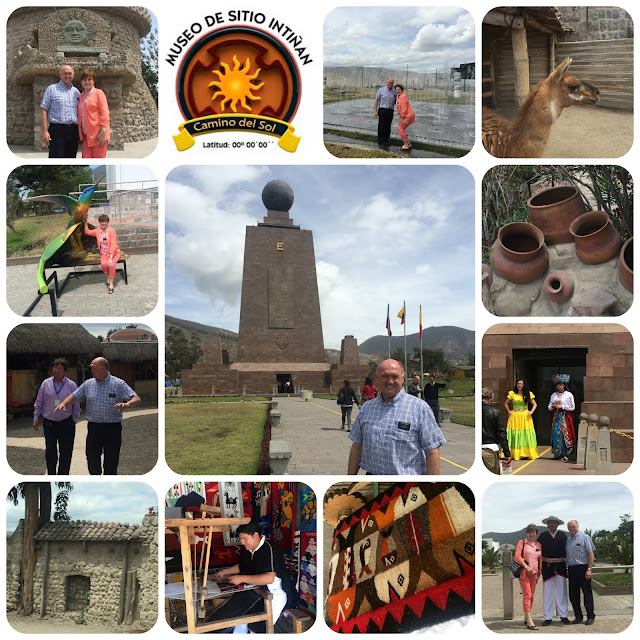Arequipa, Peru
I know it seems like we are always playing on our mission
.... not always. However, because of our assignment as area auditors, we
are required to travel throughout the area to meet with and train our 35
Assistant Area auditors in all five countries in the South America Northwest
Area. We finally were able to travel to the Southern half of Peru where
we held another AAA training meeting in the beautiful, colonial, and historical
city of Arequipa. Before we met on Saturday, we spent two days in the old
part of Arequipa, walking the four hundred year old cobble stone streets and
visiting the many historical colonial buildings and cathedrals. We felt
the spirit of the area, especially as we gazed upon the breathtaking, panoramic
view of three snowcapped volcanoes rising over the valley and city which was
literally built from the white volcanic rock that once flowed from these three
sister volcanoes.
We stayed at the Hotel Casa Andina, a 1600's restored
colonial mansion. It is nestled in the heart of the colonial district and
from where we took our daily walks to the places you see above. The air
was clear, crisp, and clean, quite a change from the current conditions in
Lima.
We couldn't get enough of the unique blend of colonial Spanish and indigenous cultures. It was absolutely amazing, a surreal combination of the ancient, the old, and the somewhat modern ... but not really. Yes, hard to describe. We did have a feel for the special pride the residents take in their city and surrounding beauties.
Our trip was especially "special" as we were given a guided tour of the valley of Arequipa by our dear brother Alejandro Nunez and his dear and kind wife, Mildred. They took us to the other side of the valley where we climbed a tower overlooking the green fields, blue skies and the three volcanoes. We were able to see clear across the valley to the slopes of the Arequipa temple site. We then drove to the site and looked across the valley from the other direction from the temple site. It will be beautiful on the hillside under the shadows of the three volcanoes. Alejandro and Mildred are now and forever our friends, brother and sister. Such good and humble people. Just today, we were blessed to attend the dedication of the new Trujillo temple in northern Peru. We will be there in Trujillo this coming weekend for training of the assistant auditors and will attend the newly dedicated temple on Friday.
One place we were told NOT to miss visiting was the Santa Catalina Monastery. This really is a city within a city. At its height, the monastery housed approximately 450 people (about a third of them nuns and the rest servants) in a cloistered community. In the 1960s, it was struck twice by earthquakes, severely damaging the structures, and forcing the nuns to build new accommodation next door. There are approximately 20 nuns currently living in the northern corner of the complex; the rest of the monastery is open to the public. We found the many arched paths and living areas fascinating.
We loved our trip to Arequipa, one of our “highlight” visits
so far. We want to return next year to
experience more of this amazing valley in the ancient shadows of these towering,
majestic 20,000 foot volcanoes. Hasta
que nos encontremos de nuevo.






























